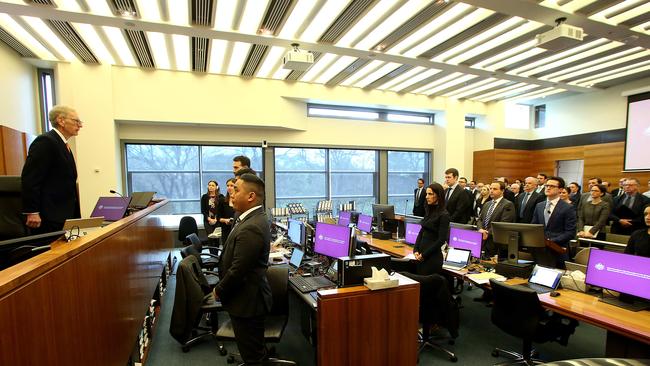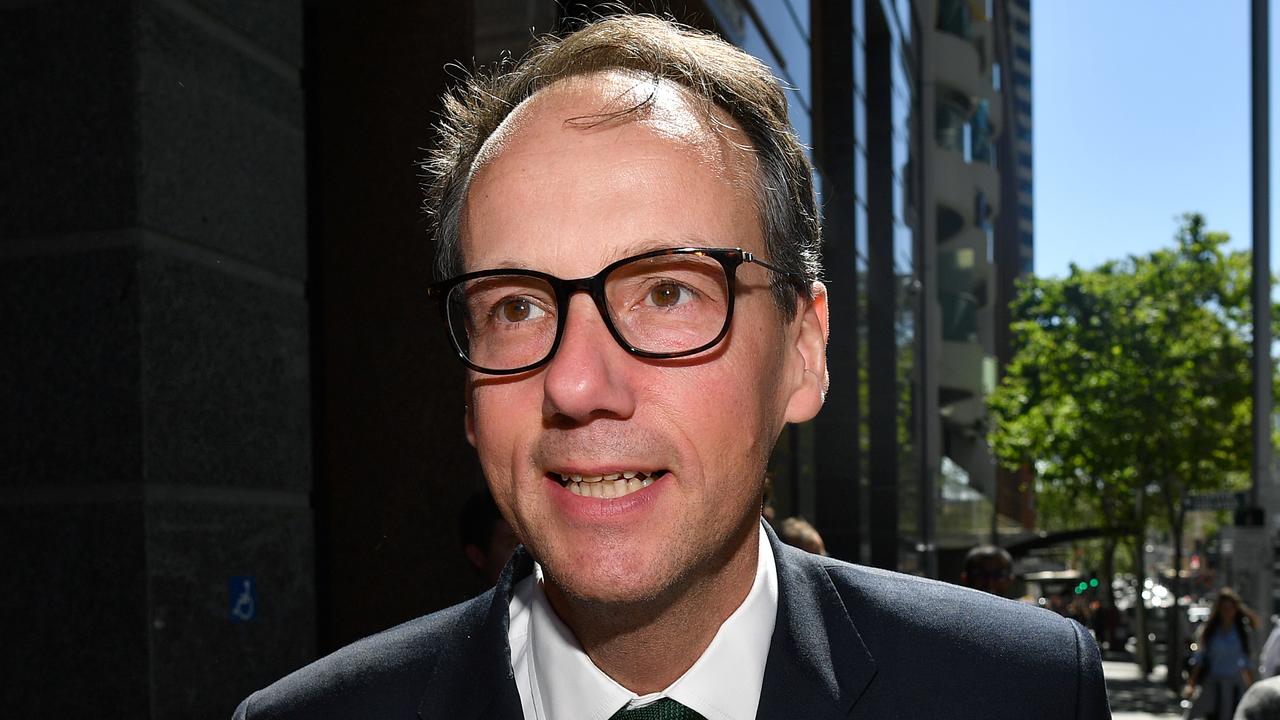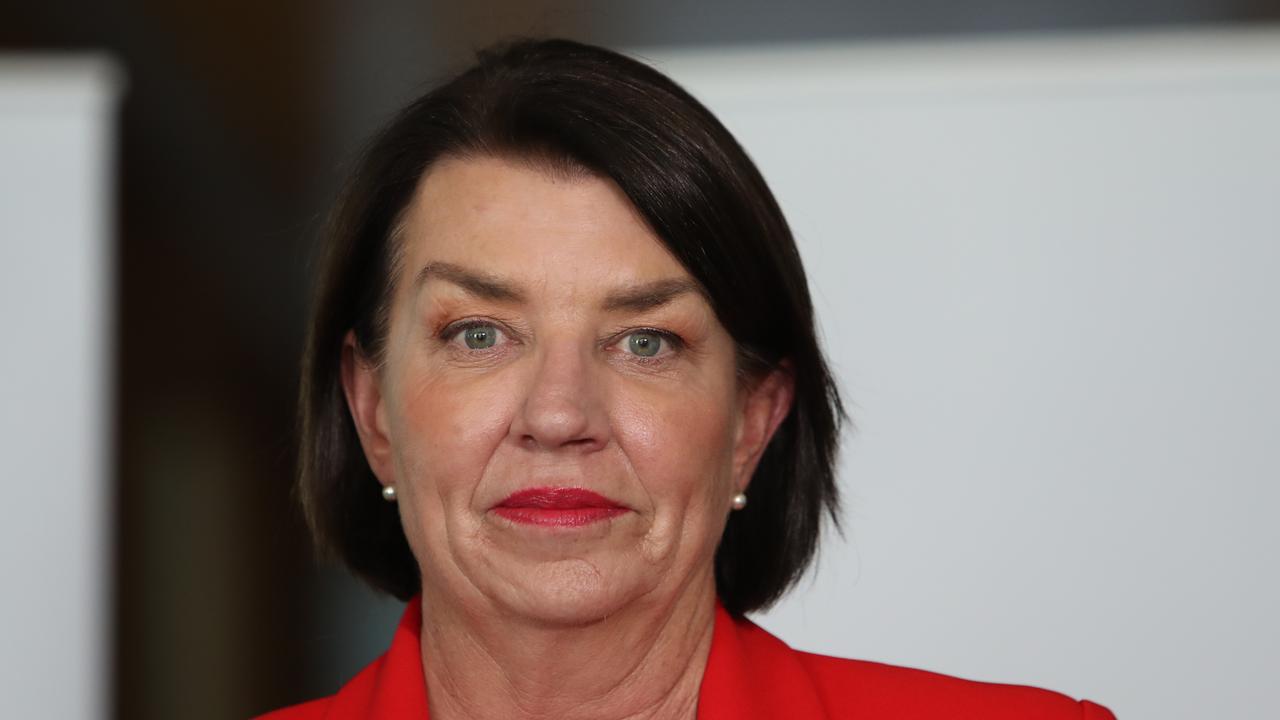Hayne’s grenade about to explode
Just two weeks stands between the financial services sector and the wash-up from the biggest probe into its misdemeanours.

Just two weeks stand between the beleaguered financial services sector and the wash-up from the biggest probe into its misdemeanours in recent history.
Following an early January hiatus, the countdown to the Hayne royal commission’s landmark final report — which may let off a grenade in the industry — is resuming.
The institutions in the firing line have a nervous wait to see whether Kenneth Hayne will recommend criminal charges or referrals to the corporate regulator. The commission has already driven sweeping changes to entrenched business models and threatens to up-end even more.
The report is due to be submitted to the federal government and Governor-General Peter Cosgrove by February 1, but it remains unclear when the industry and a disturbed public will get the chance to sift through its volumes.
Given 2019 is a federal election year and the importance of a strong policy response to the shocking revelations uncovered by the commission, some in the market expect the government to hold on to Hayne’s blueprint for at least a day or two before making it public.
Listed companies are mindful of any share price fallout, particularly if the report is released during sharemarket trading hours, as was the case with Hayne’s interim report. However, the interim report did not include recommendations.
The wide-ranging report could impact the share prices of the banks, insurers, AMP, IOOF and mortgage broking groups AFG and Mortgage Choice, among others.
The last major report into the sector — the David Murray-led Financial System Inquiry in 2014 — was released on a Sunday in late 2014 and policy responses such as beefed-up bank capital requirements are still feeding their way through the system.
This time, after seven rounds of Hayne’s public hearings and personal examples of how the finance sector was failing the public, the industry will get a firm view on conflicted remuneration, including commissions.
AMP and Westpac will also be keen to hear what Hayne says about vertical integration. Any solid recommendations moving away from the concept or calling for a complete separation of banks and companies that manufacture and sell wealth products will have significant consequences.
Westpac has already kicked off a strategic review of its financial planning business, but remains committed to life insurance and its platform investments business.
Responsible lending obligations and the use of formulaic expenditure measures to assess loan serviceability will also feature in Hayne’s final document. The banking and corporate regulators, which were both lambasted in the interim report for their light-handed approach to policing the industry, will no doubt cop further criticism.
Treasurer Josh Frydenberg told The Australian the government established the royal commission to ensure institutions and their executives “are held to account for misconduct” and to ensure a robust financial system.
“With a broad remit to inquire into the practices of financial institutions and $75 million of funding, commissioner Hayne has held seven rounds of hearings and received more than 10,000 submissions,” he said.
“The interim report and hearings make clear that some financial institutions have fallen far short of treating Australians honestly and fairly.
“The government looks forward to receiving commissioner Hayne’s final report by 1 February and considering its recommendations as we continue to reform the financial sector.”
Hinting that the report will be released outside of ASX trading, Mr Frydenberg added:
“The government recognises the potential market sensitivity of the final report and will take this into account in considering the timing of its release.”
His Labor Party opponent Chris Bowen called on the government to release the Hayne final report in a timely manner, and stressed the importance of a response restoring “trust and confidence” in the sector.
“Anything other than the immediate release of the final report will be an unnecessary politicisation of the royal commission process,” he said.
“Victims of banking scandals and all Australians deserve nothing less than the final report being released straight away. This was what happened with the interim report — and that was the appropriate thing to do.
“The expectation would be regardless of who wins the next election, there would be a swift move to implement all of the royal commission report’s recommendations.”
Whichever way you look at it though, Hayne’s recommendations will take years to play out.
The big four banks are already forking out $1.4 billion in remediation to customers and the final amount will be multiples of that. Hayne listened to revelations including AMP misleading the corporate regulator, high-pressure sales tactics at a spate of institutions, rampant rorting of programs to encourage mortgage referrals and charging fees where no services were provided.
Deutsche Bank analyst Matthew Wilson pondered the royal commission wash-up this month.
“When the royal commission concludes on 1 February 2019, in our view, it will mark the end of the beginning of a long period of cultural adjustment,” he said.
“The regulatory response is typically slow, piecemeal and pendulum-like.”
Deutsche doesn’t expect any radical recommendations for new legislation but tips Hayne may call for a new independent conduct regulator, mirroring Britain’s Financial Conduct Authority and propose a ban on regulators becoming non-executive directors of financial services companies. The 2019 royal commission fallout should also witness a less intense lobbying effort from industry bodies.
The Financial System Inquiry fuelled a significant lobbying effort, rivalling that in the lead-up to the Future of Financial Advice reforms in 2012-13.
This time, the sector is backed into a corner after its dirty laundry has been well and truly aired.
Other royal commissions that have touched the sector have centred on the corporate collapses of HIH Insurance in 2001 and merchant bank Rothwells, which was entangled in the WA Inc royal commission.
Hayne’s final report will add to other historic documents that have shaped the banking sector, including the Campbell Report in 1981 and Wallis Report in 1997.
It’s also heartening that the work of regulators like the Productivity Commission has overlapped with the royal commission, underlining the need for change.
The interim Hayne report spanned more than 900 pages, including appendices, making it clear any definitive responses by the nation’s biggest financial institutions to the final document will take time to formulate.
While they wait for Hayne’s grenade, the task of identifying mistakes and potential remediation costs continues.
National Australia Bank is said to have ramped up its customer repayment program over recent weeks for those that were overcharged fees in its financial planning unit.
Sources said part of the wholesale review of customer accounts included expediting remediation of smaller amounts.
That remediation program started in late December at NAB and the bank says it will be completed this year.
Watch this space.




To join the conversation, please log in. Don't have an account? Register
Join the conversation, you are commenting as Logout